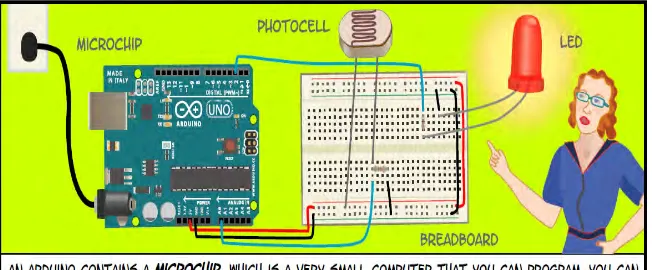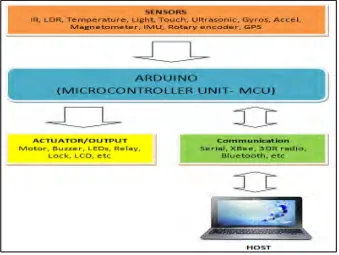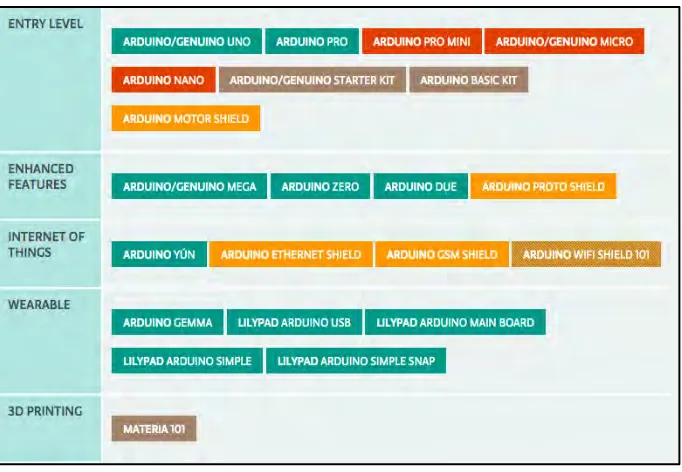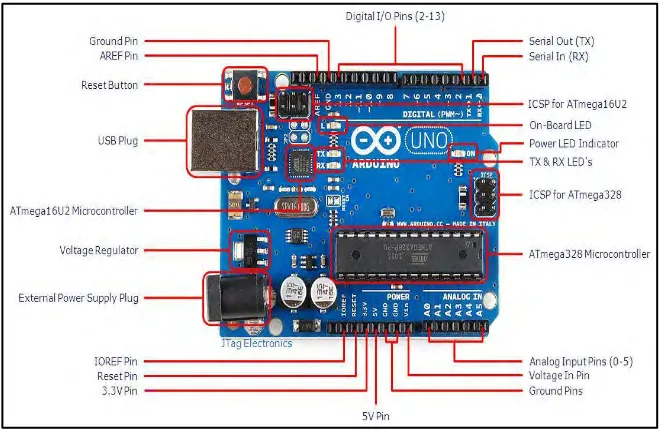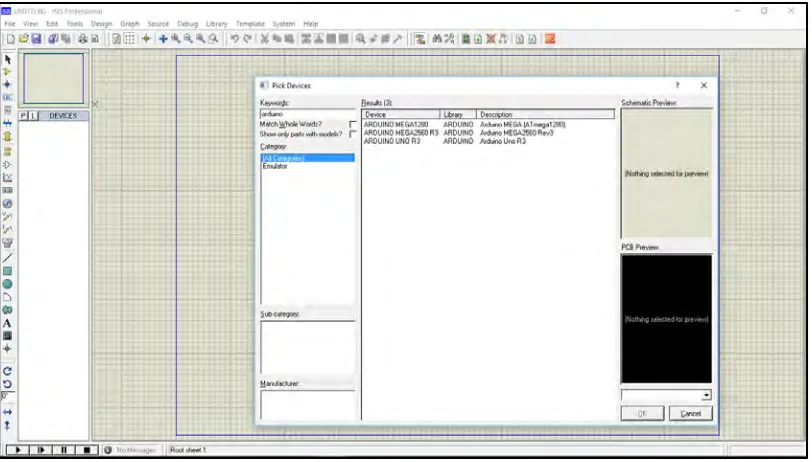UNIVERSITI TEKNIKAL MALAYSIA MELAKA
DEVELOPMENT OF MILK DISPENSER USING ARDUINO
MICROCONTROLLER
This report is submitted in accordance with the requirement of the Universiti Teknikal Malaysia Melaka (UTeM) for the Bachelor Degree of Engineering
Technology (Industrial Power) with Honours.
by
MASRINA BINTI MANSOR
B071410421
950419-06-5452
UNIVERSITI TEKNIKAL MALAYSIA MELAKA
BORANG PENGESAHAN STATUS LAPORAN PROJEK SARJANA MUDA
TAJUK: Development of Milk Dispenser using Arduino Microcontroller
SESI PENGAJIAN: 2017/18 Semester I
Saya MASRINA BINTI MANSOR
mengaku membenarkan Laporan PSM ini disimpan di Perpustakaan Universiti Teknikal Malaysia Melaka (UTeM) dengan syarat-syarat kegunaan seperti berikut:
1. Laporan PSM adalah hak milik Universiti Teknikal Malaysia Melaka dan penulis. 2. Perpustakaan Universiti Teknikal Malaysia Melaka dibenarkan membuat salinan
untuk tujuan pengajian sahaja dengan izin penulis.
3. Perpustakaan dibenarkan membuat salinan laporan PSM ini sebagai bahan pertukaran antara institusi pengajian tinggi.
4. **Sila tandakan ( )
SULIT
TERHAD
TIDAK TERHAD
(Mengandungi maklumat yang berdarjah keselamatan atau kepentingan Malaysia sebagaimana yang termaktub dalam AKTA RAHSIA RASMI 1972)
(Mengandungi maklumat TERHAD yang telah ditentukan oleh organisasi/badan di mana penyelidikan dijalankan)
Alamat Tetap:
NO. 429 (FELDA) Bukit Kuantan,
iii
DECLARATION
I hereby, declared this report entitled “PSM Title” is the results of my own research except as cited in references.
Signature : ……….
Author’s Name : MASRINA BINTI MANSOR
iv
APPROVAL
This report is submitted to the Faculty of Engineering Technology of UTeM as a partial fulfillment of the requirements for the degree of Bachelor of Electrical Engineering Technology (Industrial Power) with Honours. The member of
the supervisory is as follow:
……… (INTAN MASTURA BINTI SAADON)
v
ABSTRAK
Tujuan projek ini ialah untuk merekabentuk satu protaip dispenser susu yang
mempunyai dulang botol dengan mengaplikasikan sistem terbenam yang boleh
mencampurkan susu formula dengan air suam mengikut kuantiti susu formula yang
dipilih. Selain itu, suhu air dalam periuk termos perlu mengekalkan suhu yang
sesuai. Tambahan pula, projek ini mempunyai dua bahagian iaitu perisian dan
perkakasan. Bagi pembangunan perisian, projek ini menggunakan perisian Proteus
yang digunakan untuk mensimulasikan litar dan pemgawal mikro Arduino untuk
mengawal perkaksasan. Manakala, pembangunan perkakasan pula dibahagikan
kepada tiga bahagaian iaitu bahagian susu formula, bahagian mencampurkan dan
periuk thermos. Pada akhir projek ini, peranti yang dibangunkan boleh
memendekkan proses menyediakan formula susu berbanding dengan kaedah manual.
Oleh itu, peranti ini sesuai untuk menyediakan susu kepada bayi dengan kadar
vi
ABSTRACT
The aim of this project is to design a prototype of milk dispenser with bottle tray by applying embedded system that can mix milk formula and warm water based on the chosen the amount of milk formula. Besides, the temperature of the water in thermos pot has to be maintaining at appropriate temperature. In addition, this project contain of two parts, namely software development and hardware development. For software development, the project uses Proteus Software to simulate the circuit and Arduino microcontroller to control the equipment. Whereas, the hardware development divided by three parts specifically milk powder storage, mixing bowl and thermos pot. In the end of this project, the the developed device can shorten the milk preparation shortening as compared to manual method. Thus, this device is suitable for preparing milk for baby instantly.
vii
DEDICATION
To my beloved parents and family,
To my supervisor and co-supervisor,
Puan Intan Mastura binti Saadon and Dr. Mohd Badril bin Nor Shah,
viii
ACKNOWLEDGEMENT
ix
TABLE OF CONTENT
Declaration iii
Approval iv
Abstrak v
Abstract vi
Dedication vii
Acknowledgement viii
Table of Content v-xi List of Tables xii
List of Figures xiii-xiv List Abbreviations, Symbols and Nomenclatures xv
CHAPTER 1: INTRODUCTION 1
1.1 Introduction 2
1.2 Project Background 2
1.3 Problem Statement 2
1.4 Project Objectives 2 1.5 Project Work Scope 3
1.6 Thesis Outline 3
CHAPTER 2: LITERATURE REVIEW 4
2.1 Introduction 4
2.2 Arduino Microcontroller 4 2.2.1 Introduction to Arduino 4-6 2.2.2 Arduino Board 6-7 2.2.3 Arduino UNO 7-8 2.3 Software Specification 8
2.3.1 Proteus 7.8 Professional 9
x
2.4 Hardware Specification 11
2.4.1 DC Motor 11
2.4.2 Coffee Frother 12
2.4.3 Water Heater Coil 13
2.4.4 Temperature Sensor 14
2.4.5 Wiper Pump 15
2.4.6 Solenoid 16
2.4.7 Relay 17
2.5 Previous Project 18
2.5.1 Analysis of Standard Options for Water Dispenser 18
2.5.2 Baby Formula Maker 19
2.5.3 Adjustable Pot Stirrer 20
2.5.4 Raw Milk Hygiene at Local Markets and Automatic Milk 21
Dispenser Machines CHAPTER 3: METHODOLOGY 22
3.1 Introduction 22
3.2 Project Planning and Development 22-23 3.3 Block Diagram 24
3.4 Design and Circuit Simulation 24
3.4.1 Arduino UNO Microcontroller 25
3.4.2 DC Motor 26
3.4.3 Temperature Sensor and Water Heater Coil 27
3.5 Program Development 28
3.6 Hardware Development 29
3.6.1 Milk Powder Storage 29
3.6.2 Thermos Pot 29
3.6.3 Mixing Bowl 29
3.7 Sketch up Design 30
CHAPTER 4: RESULT AND DISCUSSION 31
xi
4.2 Software Development 31-32
4.3 Hardware Development 32
4.4 Discussion 32-35 CHAPTER 5: CONCLUSION AND RECOMMENDATION 36
5.1 Introduction 36
5.2 Summary of Project 36-37 5.3 Achievement of Objective 37
5.4 Limitation 37
5.5 Future Work 38
REFERENCES 39
xii
LIST OF TABLES
4.1 Expected Result 34
xiii
LIST OF FIGURES
2.1 Arduino Definition 5
2.1 An example of Basic Arduino Project 5
2.3 Complete Arduino-Based System Overview 6
2.4 Arduino Products 7
2.5 Arduino UNO Diagram 8
2.6 Technical Specification of Arduino UNO 8
2.7 Proteus 7.8 Professional 9
2.8 Arduino software (IDE) 10
2.9 Arduino IDE Basic 10
2.10 DC Motor 11
2.11 Coffee Frother 12
2.12 Water heater coil 13
2.13 DS18B20 Temperature Sensor 14
2.14 Wiper Pump 15
2.15 Solenoid 16
2.16 Relay 17
2.17 Three Types of Conditioned Water Dispenser 18
2.18 Prototype of Baby Formula Maker 19
2.19 Prototype of Adjustable Pot Stirrer 20
3.1 Project Flowchart 23
3.2 Block Diagram 24
3.3 Arduino UNO Microcontroller 25
3.4 Simulation of DC Motor 26
3.5 Simulation of DS18B20 Temperature Sensor 27
3.6 Flowchart of Milk Dispenser 28
xiv
4.1 Simulation Using by Proteus 32
4.2 The Prototype of Milk Dispenser 32
4.3 Graph of Result 35
4.4 Graph of Average Result 36
xv
LIST OF ABBREVIATIONS, SYMBOLS AND
NOMENCLATURE
IDE - Integrated Development Environment ISIS - Intelligent Schematic Input System AC - Alternating Current
1
CHAPTER 1
INTRODUCTION
1.1 Introduction
This chapter briefly discussed on the general idea of this project, including of project background, problem statement, objectives and work scope.
1.2 Project Background
2
1.3 Problem Statement
A milk dispenser is designed to mix formula milk with warm water automatically with shortening time of preparation of milk. This is because the preparation of milk manually is time consuming. In order to make milk manually, the water has to be heated and to be cooled at an appropriate temperature, the quantity of baby formula has to be measured by using a spoon, the warm water and milk formula have to place in a bottle and have to shake each other. It is most difficult part for parents to wake up and to pour in the feeding bottle with a sleepy eye, especially at around 2 a.m. In addition to shorten the time for milk preparation, it is also to protect the safety of parents during midnight. This is because many possibilities will occur, such as hot water burn, milk spill, hot water spill or anything-unexpected accident due to sleepy parents. The other problem view, parents might not give the right recipe per bottle toward the desired amount of formula milk and water. Thus, by this system, the amount of formula milk and water was measured due the right recipe.
1.4 Project Objectives
The objectives evaluated to assist and completing this project;
(i) To design a prototype of milk dispenser that can put the bottle tray by apply an embedded system that can mix formula milk and water.
(ii) To analyse the performance of time for milk preparation.
3
1.5 Project Work Scope
This project that design with embedded system is process of milk preparation will be quick where can mix the recipe and milk immediately;
(i) Software development is using Arduino and Proteus that can simulate the circuit and link with the hardware.
(ii) The hardware development is designed mechanical part of the dispenser by sketch up and develops the prototype to be implemented with the electronic parts and it also includes the DC motor, water heater coil and relay.
(iii) By detecting the temperature of water using temperature sensor and the Arduino microcontroller as a controller which can control the fluctuate temperature of water at 40⁰C. In addition, on off controller is chosen in this system.
1.6 Thesis Outline
This thesis outline consists of five chapters and is organized as follows.
(i) Chapter 1: This part briefly describes on the general knowledge of this project, including of introduction, problem statement, objective and scope of this project.
(ii) Chapter 2: This chapter has been explained about the literature review regarding and related to this project. It is important in order to obtain the some knowledge or concept of this system. Then, explanation in general of software and hardware development also included in this part.
(iii) Chapter 3: This part focuses more about the process of constructing and define the methodology that to conduct this project with theory and practical. (iv) Chapter 4: This part will be discussed about the result regarding the
experiment that's been done and the analysis of the result is also explained. (v) Chapter 5: This section will present the conclusion of this project and
4
CHAPTER 2
LITERATURE REVIEW
2.1 Introduction
In this chapter, the literature review covers the information and idea for finishing this project being discussed. There are many resources had been taken for this project such as books, journal and website. Besides that, this chapter will also discuss on detailed description about the circuit, software and hardware, which used in the project. This chapter also refers from previous project in order to make some modification to improve or take some idea for this project. This kind of thing being very significant and useful to complete the project that created.
2.2 Arduino Microcontroller
5
2.2.1 Introduction to Arduino
Arduino is an open-source electronics prototyping platform based on easy-to use hardware and software.
Arduino boards are able to read input and turn it into an output. For example, light on a device or a finger on a key as an input, then turn it by triggering a motor, turn on an LED or publishing something online that act as output.
[image:20.595.164.490.572.707.2]By transferring a set of commands to the microcontroller on the board, the board can function. Figure 2.1 shows the definition of Arduino and Figure 2.2 shows the example of a basic Arduino project.
Figure 2.1: Arduino definition
Figure 2.2: An example of basic Arduino project
OPEN SOURCE
Resources that can be used, redistributed or rewritten free of charge often software or hardware
ELECTRONIC A technology which makes use of the controlled motion of electrons
through different media
PROTOTYPE An original form that can serve as a basic or standard for other things PLATFORM Hardware architecture with a software framework on which other
6 Arduino was born at the Ivrea Interaction Design Institute, Italy as an easy device for fast prototyping, an aimed at learners without a background in electronics and programming. As soon as it reached a wider public, the Arduino board started changing to familiarize to needs and challenges, differentiating its offer from simple 8-bit boards for products for late applications, wearable, 3D printing and embedded environment. Totally Arduino boards are completely open-source, empowering users to build them independently and eventually adapt them to their particular needs. The software, too, is open-source and it is growing through the contributions of users worldwide.
2.2.2 Arduino Board
[image:21.595.163.502.462.717.2]Arduino senses the environment by receiving inputs from many sensors and affects its surroundings by monitoring lights, motors and other actuators. Figure 2.3 shows the complete Arduino-based system overview and Figure 2.4 shows the Arduino Products.
7 Figure 2.4: Arduino products
2.2.3 Arduino UNO
8 Figure 2.5: Arduino UNO diagram
Figure 2.6: Technical specification of Arduino UNO
2.3 Software Specification
This part is to review about software that will use on this project. There also with some knowledge with the regard of the software
[image:23.595.159.487.331.553.2]9
2.3.1 Proteus 7.8 Professional
[image:24.595.115.521.263.494.2]By using this software, the related circuit designer can be designed and simulate smoothly. It is also able to carry out an outline of the whole circuit for this milk preparation system. With this software, Intelligent Schematic Input System (ISIS) is used to obtain the output characteristic. It is widespread due to it is suitable with any types of microcontroller. Thus, it is easy for users to design and simulate the circuit. Figure 2.7 shows the simulation of ISIS.
Figure 2.7: Proteus 7.8 Professional
2.3.2 Arduino Software
